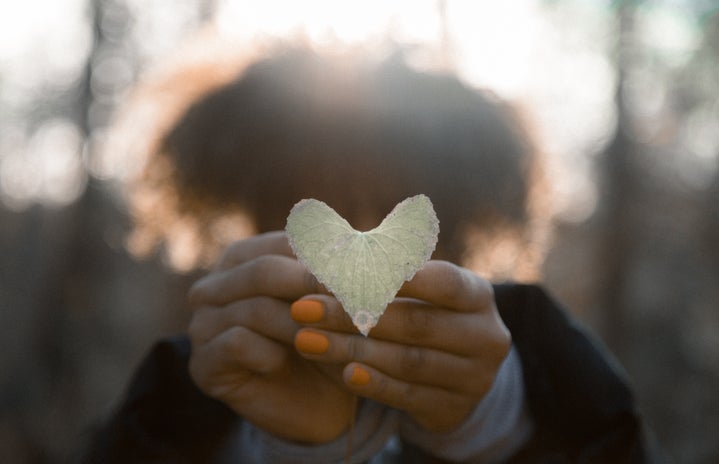Beauty And The Power Of Image
Brittany Burkett // Oct. 5 2019
It can be argued that self-image is the most compelling aspect of our everyday concentrations, and the implications of the easily adopted and self-imposed obsession with image quickly become incredibly overwhelming- often to an unhealthy level. The connotations attached to the image are powerfully addictive, to say the least. The image is everywhere whether you realize it or not, we are surrounded by the constant reminder of “perfection” every day. Adults, parents, teachers, and the media unintentionally molded us this way and there seems to be no escape. So what is the image? Well for starters it is unrealistic, unattainable, and merely a fantasy created to most likely sell a product. This image is thrown at young girls and women, damaging their body image and self-esteem. One of the many concerns is that this is so normal that we don’t teach children the difference between realistic and unrealistic images of people; these unreachable standards become reality.
Approximately 80% of U.S. women don’t like how they look and 70% of normal weighted women want to be thinner. Why? Because of the outrageous pressure that the media puts on women to be the ideal woman. Body image is a major issue that is prominent in our culture and can lead to serious problems such as depression, anxiety, suicide, and eating disorders. 53% of thirteen-year-old American girls are unhappy with their bodies. This number grows to 78% by the age of 17. This statistic, in particular, scares me the most because of the alarming fact that most kids are creating social media accounts at much younger ages than before. This cycle may never stop because we feed into it and it will continue to grow and spread to younger generations poisoning them with unrealistic expectations.
Unfortunately, this is completely normalized for women especially while scrolling through a typical Instagram feed. On Instagram, you will find a perfect fit woman with flawless skin and not a stretch mark in sight. You find the girls posing in trendy workout attire in front of an amazing view with their hair and makeup done. That’s not realistic to me. It is obvious that it is meant to inspire women for a healthy lifestyle but it puts an unrealistic image in our minds telling us we should look this way. The way social media influencers present a “healthy lifestyle” blurs the line more than ever about what’s realistic and what’s not. There is an absence in the representation of women in the media which maintains social inequality. This is just one example out of billions on Instagram but they all have the same apparent message which is: be skinny, be healthy, be fit, have clear skin, have perfect makeup and hair, and just be perfect no matter what, oh and have a man!
It is not easy seeing Instagram models with their “perfect” lifestyles. It can be damaging to how women view their own lifestyles. What people don’t understand nowadays is Instagram and other social media platforms have turned into marketing yourself as a brand. Instagram is packed with advertisements, in 2018 an estimated 71% of US businesses are on Instagram and has more than one million monthly advertisers and eight million business profiles. This fuels Instagram’s Ad revenue, estimated at about seven billion dollars by the end of 2018. 68% of Instagram users are female and 72% of users are teens. The image to me is money and we are just consumers. Not women, not people.
Instagram was intended to focus on the image clearly because it’s a platform made for everyone and you can post anything you want. Social media allows the user to control exactly how they are represented. The user’s identity may reflect who they think they are or how they want people to see them. Unsuccessfully, it has turned into this manipulation of the image for profit. The physically “perfect” people displayed in ads don’t exist. Everything that makes that particular person unique is erased by photoshop. Every stretch mark, wrinkle, and various other “imperfections” vanish at once. Our media industry is toxic for hiding the real bodies in the world and further allowing this manipulation to negatively impact women of all ages. I wanted to mention that the media may also have a bad effect on a male’s body image because they are photoshopped as well. Nonetheless, women in advertisements are way more sexualized than men and it impacts us more. Some researchers say men are typically more satisfied with their physical appearance and less likely than women to exhibit body-change behaviors Men may form an unrealistic expectation for the real women in their lives which can cause many problems when it comes to the development of relationships.
Evidently, the points argued above to expose the relationships between social media advertising and negative body image across all genders. To shed some light on this topic there are many companies, celebrities, and influencers out there that have worked hard toward changing the way this society sees the beauty and this should not go unnoticed. Companies like Aerie, Target, and Old Navy put out advertisements with “plus-size” models and received a positive response. This is a great step for our society to work toward change but this mold will be hard to break. Advertisers seem to not understand the damage this is doing to people, all they care about is the flow of cash through their app every day. If people keep hating the way they look, they will keep buying products to change themselves. And therefore, advertisers will keep making loads of money. People need to be aware that this is an issue that desperately needs attention. Don’t be silent about it just because you think its “normal” doesn’t make it right. We need to continue to encourage brands to represent all of us and every part of us in our natural state. Every part of the natural human body is covered up and for what? It doesn’t benefit us but it does benefit social media platforms. To them, we are just consumers. This image is powerful because our society allows it to be. We ignore it and pretend it doesn’t exist which allows it to silently gain control over us. The image of beauty can come in all forms and we shouldn’t just limit it to one type of person. We were all created differently for a reason, instead of pretending “flaws” don’t exist we should be embracing them. We should all do whatever we can to educate the people around us online and offline that advertising is a fantasy created to sell something and it does not mirror reality.
Sources:
18_Gallivan_Teens-social-media-body-image-presentation-H-Gallivan-Spring-2014.
(Muth & Cash 1997; see Doyle & Engeln 2014)
“Male vs. Female Body Image.” Bradley University, Bradley University, www.bradley.edu/sites/bodyproject/male-body-image-m-vs-f/.



